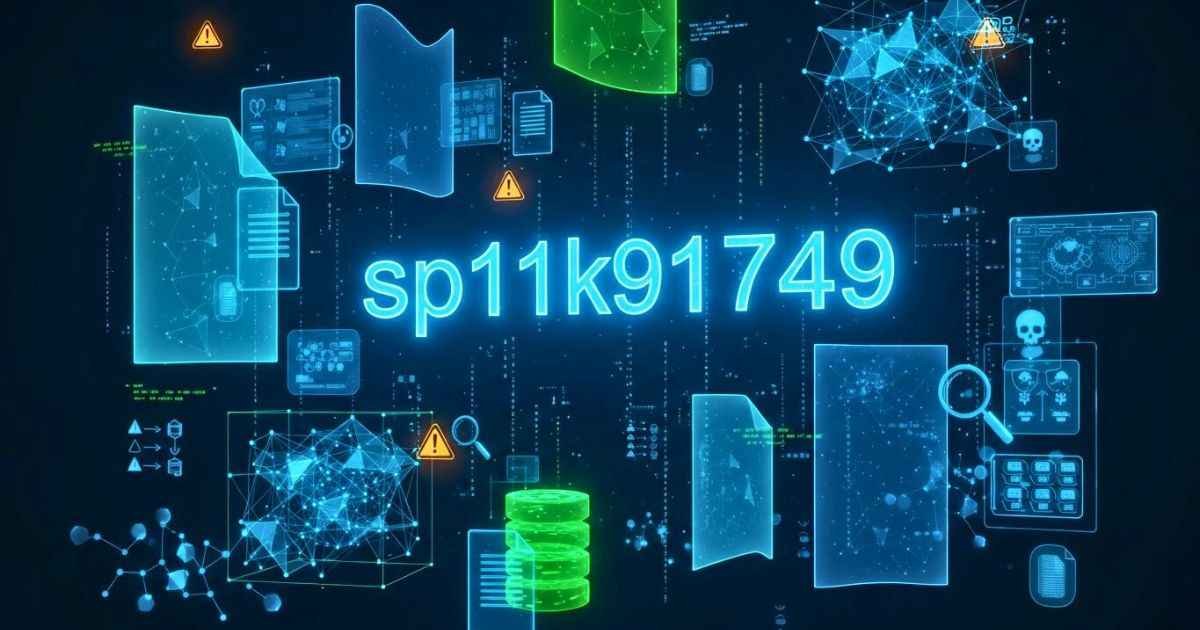Why Everyone Talks About Texas College Bridge
Have you heard parents or students in Texas talk about college help programs? Many families look for ways to get ready for school after high school. One program that comes up again and again is called Texas College Bridge.
So, why do people search for it so much? The answer is simple. Going from high school to college can feel scary. Many students worry, “Am I ready for harder classes?” Parents wonder, “Will my child do well?” A program that promises extra help can bring peace of mind.
In simple words, Texas College Bridge is an online set of classes. It helps students practice and grow before they step into college. It is not a new high school and not a full college course. Instead, it works like training wheels on a bike. It gives students time and tools to build skills.
This article will share the full truth. You will learn about the good points, the weak points, and how it really works. We will talk about how it began, who runs it, and why schools trust it. By the end, you will know if this program is right for a student in your family.
What Is Texas College Bridge?
Texas College Bridge is an online program made to fill the space between high school and college. Think about a bridge over a river. High school is on one side, and college is on the other. Some students are ready to cross on their own, but others need strong steps to get across safely. This program builds those steps.
It was created because many students in Texas finish high school but still struggle with college-level work. They may find math too tough or reading too complex. That is where this program steps in. It gives extra practice in key subjects so students can walk into college with more confidence.
The program offers two main areas: math and English. The math readiness program helps students brush up on numbers, problem-solving, and basic algebra. The English readiness courses focus on reading, writing, and clear thinking. Both are built as a self-paced curriculum. That means students can move fast or slow, depending on what they need.
Who runs it? Texas College Bridge is not just one school. It is powered by NROC (a national online learning group). Texas schools and districts also work as partners. This teamwork makes sure the program fits local needs while keeping high standards.
In short, it is not only a set of online lessons. It is a shared project built to prepare students for success, no matter which Texas college they choose later.
How It Works – Step by Step
When a student joins Texas College Bridge, the journey follows a few simple steps. The goal is to make learning clear and fair for everyone.
Step 1: Diagnostic Test
It begins with a short test, sometimes called a “knowledge check.” This shows what the student already knows and what skills need more work. Think of it like a doctor’s checkup, but for school subjects.
Step 2: Personalized Study Path
Based on that test, each student gets a personalized study path. This means no two students follow the exact same lessons. Some may need more math, others more reading. This keeps time from being wasted.
Step 3: Online Study Modules
The program uses online study modules to teach lessons. These are small chunks of learning, filled with practice, videos, and quizzes. Students can move at their own pace. It acts like an adaptive college readiness tool, adjusting to what each learner needs.
Step 4: Teacher Support
Even though the work is online, teachers are still involved. They check progress, give advice, and help when a student feels stuck. This keeps learning from feeling lonely.
Step 5: Proof of Work
At the end, students earn a certificate. But there’s more—each certificate comes with a digital learning path record stored on blockchain. This means colleges can confirm it is real and trusted.
Here’s a quick table to make it clear:
| Step | What Happens |
|---|---|
| Diagnostic Test | Student takes a checkup test |
| Personalized Path | Program builds unique lessons |
| Study Modules | Small online lessons to learn |
| Teacher Help | Teachers track and guide |
| Certificate | Digital proof with blockchain |
This step-by-step setup makes sure students move forward with skills, not stress.
Texas College Bridge: Step-by-Step Student Journey
Diagnostic Test
Check what the student knows
Personalized Study Path
Unique learning path for each student
Online Study Modules
Small lessons, quizzes, and practice
Teacher Support
Help and guidance when needed
Proof of Work
Earn a verified certificate for colleges
This infographic shows the full journey from testing to earning a verified certificate, making college readiness easier to grasp.
Who Can Join? Students, Teachers, Districts, and Colleges
Texas College Bridge is not only for students. It is a full network where schools, teachers, and even colleges play a part.
Students
The main group is high school juniors and seniors. These are kids close to graduation who want to be sure they are ready for college-level work. They join to build confidence and avoid extra classes later.
Teachers
Teachers get special dashboards. These tools show student progress in real time. They can see who is struggling and give feedback right away. For teachers, this means less guessing and more guiding.
Districts
School districts also use the program to meet state needs. In Texas, schools follow the HB 5 requirement course rule. This law asks schools to prove students are ready for the next step. Texas College Bridge helps districts meet that rule in a simple, clear way.
Colleges
Colleges are part of the deal too. They trust the program’s results. If a student finishes the course, many colleges in Texas accept that as proof the student is ready. This creates a smoother higher education pathway.
So, the program is a team effort. Students learn, teachers support, districts meet state rules, and colleges gain stronger freshmen. Everyone wins.
Benefits for Students
Students are the heart of Texas College Bridge. The program was built to help them step into college life with fewer struggles.
Avoid Remedial Classes
One big benefit is skipping “remedial” or catch-up classes. Without this program, some students must take extra courses in college just to cover old ground. That costs time and money. With this bridge, many avoid that.
Earn TSI Exemption
Texas uses a test called TSI (Texas Success Initiative) to check readiness. Passing the bridge program can give students a TSI exemption program status. This means they don’t need to take the TSI exam, saving stress.
Save Time and Money
By avoiding extra classes, students move faster to real college courses. That means they can graduate sooner and spend less on tuition. For families, this is a big relief.
Career and College Advising
The program also gives guidance. Students get tips about careers, majors, and planning ahead. It is not just about passing math or English—it is about seeing the bigger picture of future goals.
With these benefits, the program gives students a strong push before college starts. It helps them get ready for college entrance. It also makes reading and writing skills better. For math, it helps close gaps so students don’t feel left behind.
Benefits for Teachers and Districts
Texas College Bridge is not just for students. Teachers and schools gain a lot from it too.
Track Progress
Teachers use a skills mastery dashboard that shows how each student is doing. They can see who is moving ahead and who is falling behind. This makes it easy to act before small problems grow bigger.
Provide Interventions
If a student struggles, teachers can step in fast. The program acts like an academic intervention tool. Teachers can give extra help or new practice work. This keeps students from losing hope.
Accountability Reporting
Districts also benefit. In Texas, schools must show proof that students are ready for the next step. Reports from the program help with that. The teacher-facilitated program creates clear records that schools can use to meet state rules.
For teachers, this means less guessing and more guiding. For districts, it means meeting state laws in a fair, simple way. Together, the tools make teaching easier and student progress more visible.
Higher Education Perspective
Colleges in Texas also look closely at Texas College Bridge. They see it as more than just practice.
How Colleges Use Results
When a student finishes, colleges can use the results to place them in the right classes. For many, it means direct entry into credit courses. This makes the secondary to postsecondary transition smoother.
Consistency in Standards
One issue colleges face is uneven skill levels. With this program, the results are clear and trusted. This gives credit-bearing course entry a fair base for all students. Colleges know what skills were tested, and that makes choices more consistent.
Helps Retention and Completion
Students who begin college ready are more likely to stay and finish. The program builds habits, lowers stress, and cuts down on remedial work. In some cases, it even supports dual credit readiness, letting students earn credits while in high school.
For colleges, that means stronger first-year groups and better graduation rates. For students, it means they can reach their goals faster.
The Real Truth – Pros and Cons
No program is perfect. Texas College Bridge has strong points, but also some weak spots. Knowing both helps families and schools make smart choices.
Pros
- Flexible and self-paced. Students can learn at their own speed.
- Proven results for many students who need extra support.
- Cuts down on extra classes in college.
- Recognized by many Texas schools and colleges.
- Works as a developmental education alternative that builds real skills.
Cons
- Not every college accepts the results.
- Some students may lose motivation without close support.
- Success depends on teacher help.
- Tech issues can slow learning.
- It may not replace all forms of academic preparation program work.
Here’s a quick table to see it clearly:
| Pros | Cons |
|---|---|
| Flexible and self-paced | Not accepted everywhere |
| Proven results | Students may lack motivation |
| Saves time in college | Needs teacher support |
| Accepted by many colleges | Tech problems can appear |
| Texas Success Initiative support | May not fit all learners |
In short, Texas College Bridge is a useful remedial course alternative, but it is not perfect. It can act as an academic skill-building program, but it still depends on effort from both students and teachers. Families should look at the pros and cons before joining.
Is It Really Safe and Effective?
When families look at online learning, they often ask, “Is this safe and does it really work?” Texas College Bridge is built to answer both.
Safety First
The program runs on a trusted online educational platform. All work is saved in a secure space. At the end, each student gets a certificate checked with blockchain verification. This makes sure the record is real and cannot be changed. Parents can feel safe knowing their child’s data is locked tight.
Does It Work?
The program has proof behind it. Many schools track results and show better college readiness. Students move on without extra classes, which is a strong sign. Still, it is not a magic fix. Some learners need more than online academic support to reach their goals.
Issues That Remain
Not all kids have the same tools. Some families face a digital divide, meaning weak internet or no laptop at home. Also, some at-risk student support still depends on teachers and schools. If a student already struggles with focus, the program may not be enough by itself.
In short, Texas College Bridge is safe and mostly effective. It helps many, but not all. The best results come when schools mix the program with strong teacher help and extra support for students who need it most.
Common Problems & Criticisms
Even good programs have weak spots. Texas College Bridge has faced some concerns from schools and families.
Tech Access in Rural Areas
Some towns in Texas have slow internet. Students there find it hard to log in daily. Without steady access, they miss lessons. This makes the secondary education readiness process unfair for them.
College Recognition
While many colleges honor the certificate, some do not. This means a student may still need to take placement tests. Families often feel unsure about what each college will accept.
Motivation in Self-Paced Models
Because the program is flexible, students must push themselves. Some lose focus without set class times. Teachers say that even with a faculty-reviewed curriculum, motivation is often the hardest part.
Teacher Training Gaps
The program is a teacher professional learning tool as well. But some teachers feel they do not get enough training to use the system fully. Without proper prep, they cannot give the best education transition support.
Here’s the bottom line:
- Rural students may face tech issues.
- Some colleges don’t fully accept certificates.
- Motivation drops if students are left alone.
- Teachers need better training.
Texas College Bridge helps with many problems, but it still has some gaps. This is why families and schools should ask questions before they depend only on it.
Comparisons: Texas College Bridge vs Traditional Remedial Classes
Families often ask, “Why not just take remedial classes in college?” The answer lies in time, cost, and results.
Traditional Remedial Classes
- Students pay for them.
- They take extra time and do not count toward a degree.
- Many students feel stuck before they can start real courses.
Texas College Bridge
- Free for students in many districts.
- Flexible online coursework means learners move at their own pace.
- Results are trusted in many colleges, giving personalized college readiness without delay.
- Seen as a statewide readiness solution that saves time.
Comparison Table
| Feature | Texas College Bridge | Remedial Courses |
|---|---|---|
| Cost | Free (many schools cover it) | Paid (college tuition) |
| Time | Done before college starts | Adds extra semesters |
| Credit | Helps with placement, not credit | No credit |
| Flexibility | Online, self-paced | In-class schedule |
| Recognition | Accepted by many colleges | Required if skills are low |
For most students, Texas College Bridge offers a faster, cheaper path. But if a college does not accept it, remedial classes may still be needed.
Future of Programs Like This
What will happen to programs such as Texas College Bridge in the years ahead?
Expansion Beyond Texas
The idea of helping kids before college is not only a Texas need. Other states may try similar models, using a self-assessment tool to check skills.
Better Tech Integration
Expect more smart tools, like apps that guide students step by step. Expect more smart tools, like apps that guide students step by step, similar to innovations in The Evolution of Social Media and how they influence learning engagement.
A stronger student progress tracking system can give teachers instant alerts when kids fall behind.
Growth of Adaptive Learning
Programs will likely use even smarter systems that adjust lessons in real time. Programs will likely use even smarter systems that adjust lessons in real time, similar to platforms like UGA eLC that provide structured online learning and real-time student feedback. This means every student’s path could be even more personal.
In short, programs like Texas College Bridge will likely grow, spread, and become more advanced. The future points toward faster tools and broader use across the country.
FAQs About Texas College Bridge
Is Texas College Bridge free?
Yes, in many schools the program is free. Some school districts cover the cost so students do not pay. This helps families save money on college entrance preparation. If a school does not pay, parents should ask if there is a small fee.
Does every college accept it?
Not all colleges accept Texas College Bridge. Many Texas schools do, but a few still ask for the TSI test. Before signing up, families should call the college or check the website. That way, they know if the certificate will count.
How long does it take to finish?
Most students finish in a few weeks. Some take longer if they move slow, while others finish fast. The program is self-paced, so there is no rush. Students can work at home, after school, or during class time if the school allows it.
Can it replace dual credit?
No, it does not replace dual credit. Dual credit gives real college credit while in high school. Texas College Bridge is more like a practice path. It makes sure students are ready for college work. Families can choose to do both for stronger college readiness support.
Is it worth it for at-risk students?
Yes, it can help students who struggle in math or English. At-risk students often fear falling behind. This program gives them extra practice and teacher help. Still, it works best when schools also give strong guidance and family support. Without motivation, some kids may not finish.
Conclusion
Texas College Bridge is a smart step for many Texas families. It gives students practice in math and English before they start college. This means fewer remedial classes, more time saved, and less stress.
But families should also know the limits. Not every college accepts the certificate. Some students may lose focus without close support. For the best results, parents and teachers should stay involved.
In the end, Texas College Bridge is not magic, but it is a helpful tool. It builds skills and gives confidence. For students who feel unsure about the jump from high school to college, it works like training wheels.
Before joining, families should always check the rules of the college their child wants to attend. This way, they know the time and effort will count.
For many, the program is a safe, low-cost path to better college enrollment preparation.
Disclaimer
The information in this article is for general educational purposes only. Texas College Bridge programs and policies may change, and not all colleges may accept the results. Families and students should verify details directly with their school, district, or college before making decisions. This article does not replace official advice from education authorities.

Shazny plays a key role behind the scenes, reviewing and refining content before it goes live. With a strong eye for detail, Shazny ensures that every article meets high standards of clarity, accuracy, and trustworthiness. From grammar checks to fact verification, Shazny helps maintain the quality and credibility of everything published on TryHardGuides.
Discover more from Try Hard Guides
Subscribe to get the latest posts sent to your email.




